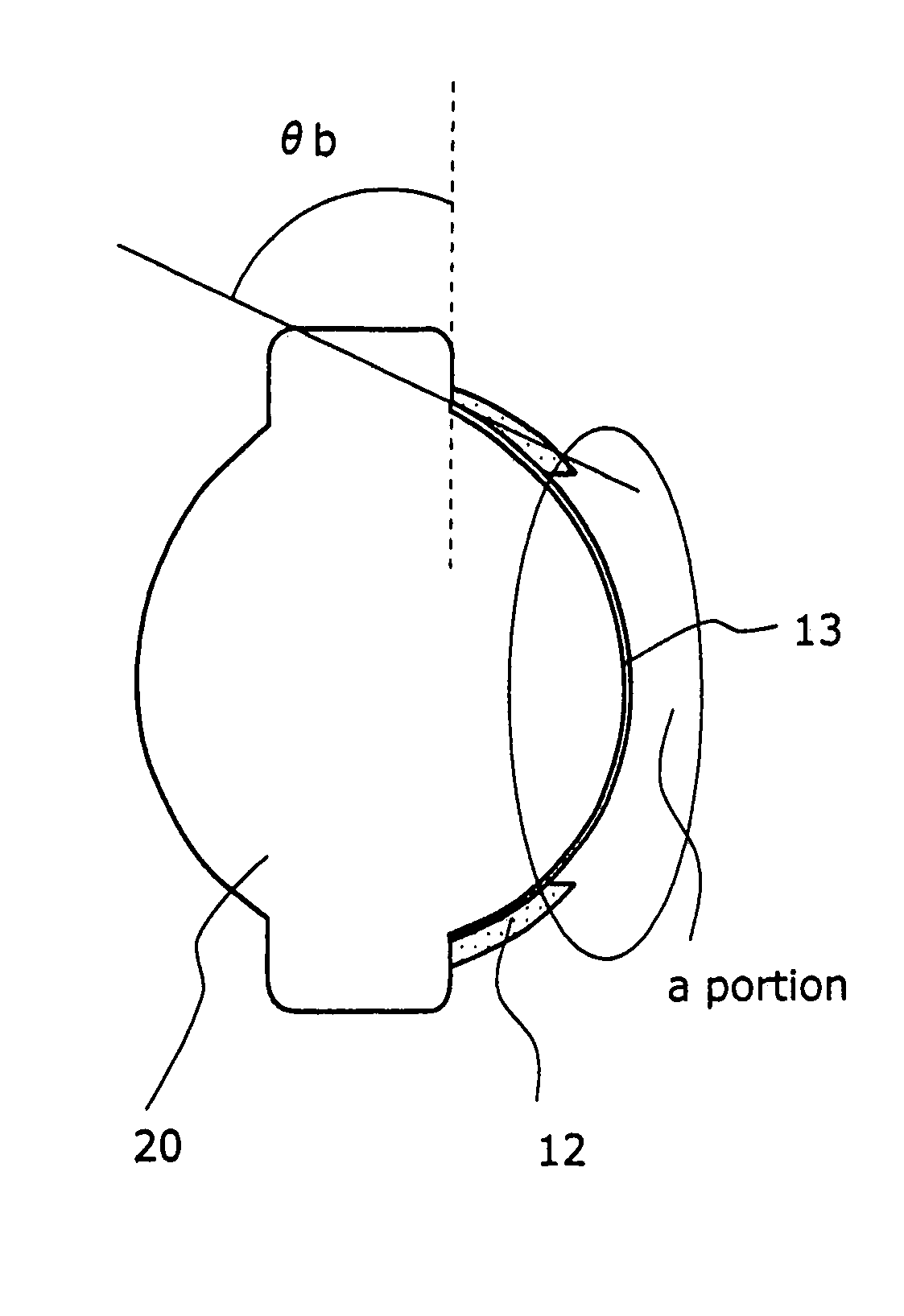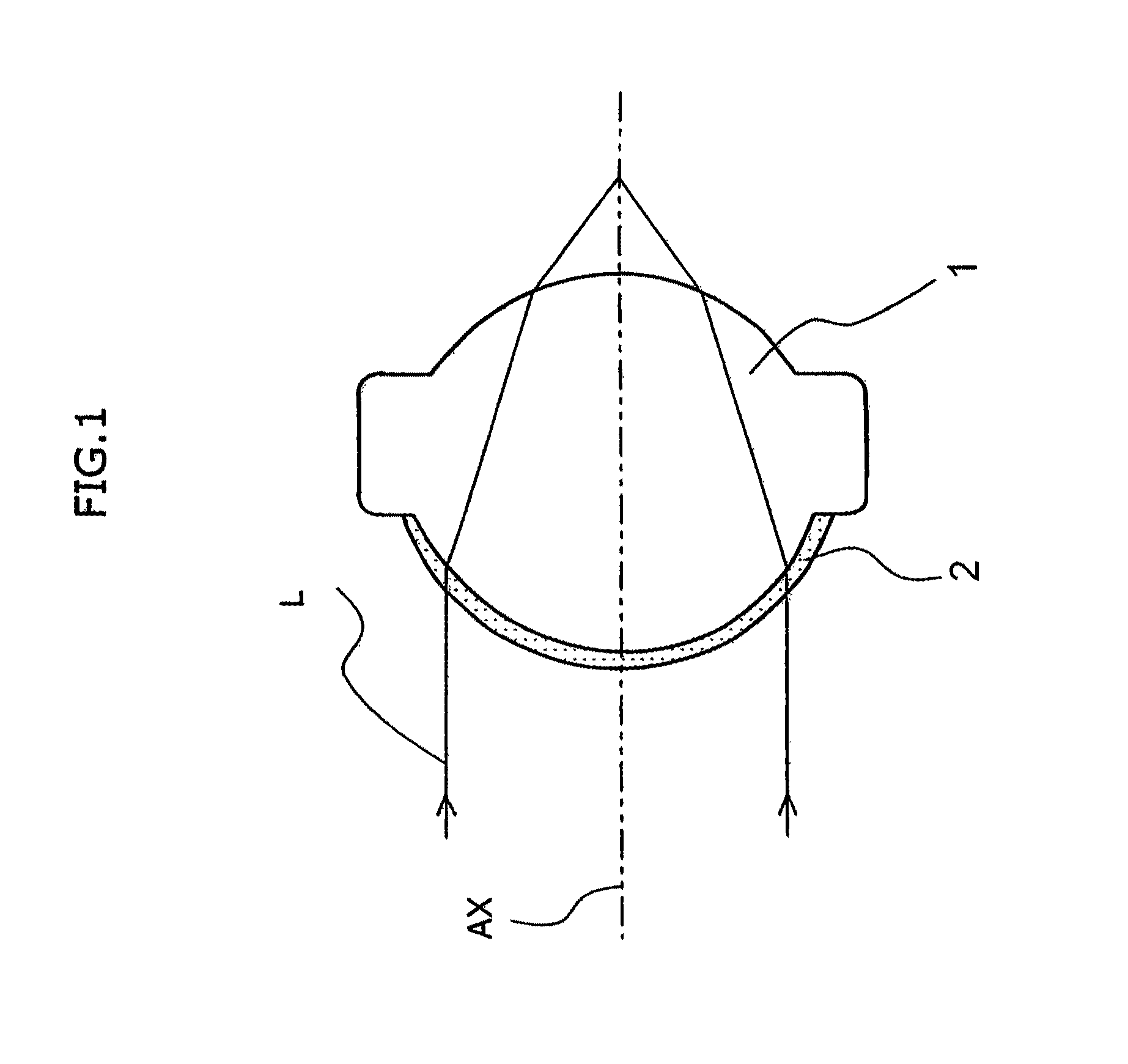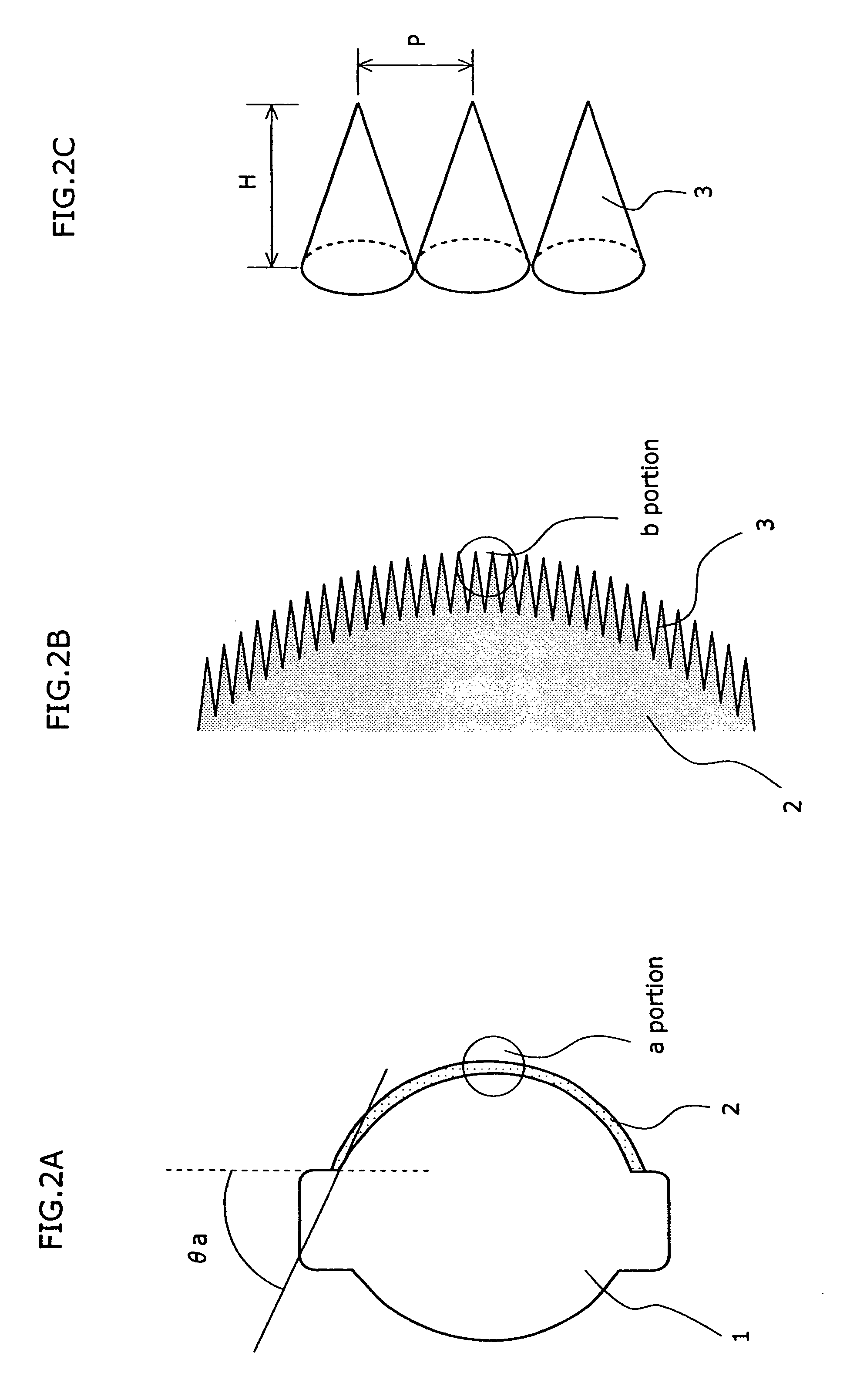Optical lens having antireflective structure
an optical lens and anti-reflective coating technology, applied in the field of optical lenses having anti-reflective coatings, can solve the problems of small thickness of anti-reflective coating applied to the peripheral area of the lens compared with that around the optical axis, difficult to reduce the beam spot diameter, and difficult to provide a high-na optical lens to which an appropriate coating is applied
- Summary
- Abstract
- Description
- Claims
- Application Information
AI Technical Summary
Benefits of technology
Problems solved by technology
Method used
Image
Examples
first embodiment
[0028]FIGS. 1 and 2A to 2C are views of an optical lens according to a first embodiment of the present invention. FIG. 1 is a light beam view of the optical lens 1. FIG. 2A is a schematic structural view. FIG. 2B is a schematic enlarged view of an a portion. FIG. 2C is a schematic enlarged view of a b portion. In the present embodiment, the wavelength of the laser beam used is near 400 nanometers, and the optical lens 1 has an NA of 0.85.
[0029]In FIG. 1, a laser beam L emitted from a non-illustrated laser source is incident on the optical lens 1. An antireflective structure 2 that prevents the reflection of the incident light is formed on the lens surface where the light beam L is incident. The light beam L passes through the antireflective coating 2 and the optical lens 1, and then, condenses in a predetermined position.
[0030]Macroscopically, the optical lens 1 is a convex lens the surfaces of which are curved. To realize a high NA, the optical lens 1 has a configuration that incre...
second embodiment
[0043]FIGS.4A to 4C are views showing an optical lens according to a second embodiment. FIG. 4A is a schematic cross-sectional view. FIG. 4B is an enlarged view of the a portion. FIG. 4C is an enlarged view of the b portion. While the optical lens 20 according to the present embodiment has a substantially similar structure to the optical lens according to the first embodiment, it is different in the following points: The antireflective structure is formed as a sheet 12 independent of the optical lens 20, and the sheet 12 is pasted to a lens peripheral area where the curvature of the lens surface is high. Here, the lens peripheral area is an area where when the height of incidence of the lens surface is h and the maximum effective diameter of the lens is hmax, h / hmax is not less than 0.6. Particularly, it is desirable that the antireflective structure be provided in an area where h / hmax is not less than 0.7 where the reduction in light quantity is large.
[0044]The optical lens 20 has ...
PUM
| Property | Measurement | Unit |
|---|---|---|
| inclination angle | aaaaa | aaaaa |
| inclination angle | aaaaa | aaaaa |
| wavelength | aaaaa | aaaaa |
Abstract
Description
Claims
Application Information
 Login to View More
Login to View More - R&D
- Intellectual Property
- Life Sciences
- Materials
- Tech Scout
- Unparalleled Data Quality
- Higher Quality Content
- 60% Fewer Hallucinations
Browse by: Latest US Patents, China's latest patents, Technical Efficacy Thesaurus, Application Domain, Technology Topic, Popular Technical Reports.
© 2025 PatSnap. All rights reserved.Legal|Privacy policy|Modern Slavery Act Transparency Statement|Sitemap|About US| Contact US: help@patsnap.com



